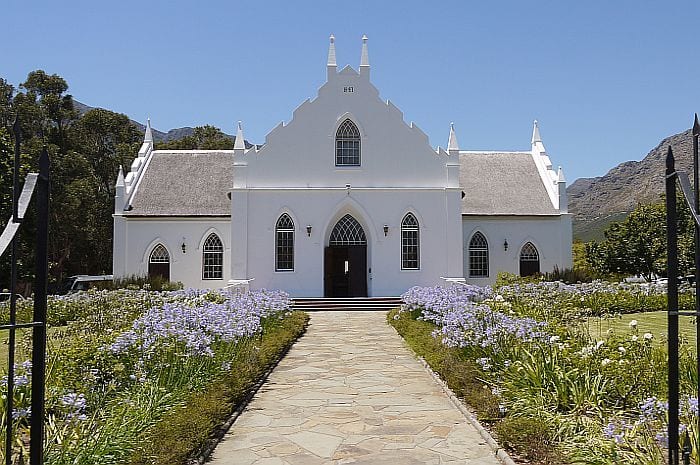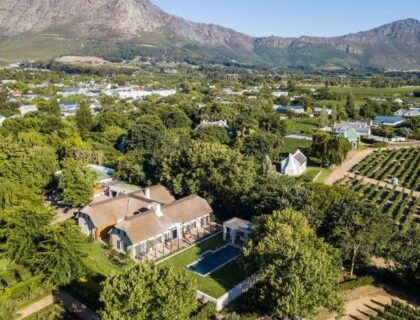Ever wondered about the Architecture of the Winelands?
One of the Wineland’s most charming features is its plentiful examples of Cape Dutch architecture. Especially in Stellenbosch and on the various wine estates.
Cape Dutch architecture is indigenous to South Africa. Dutch colonists took the Dutch architectural fashions of ornate gables and high roofs and adapted it for the Cape climate. For example the thick white washed walls and small-paned shuttered windows are designed to keep out the summer heat. The thatched roofs, with their elegant gables, kept the houses cool in summer and warm in the Cape winters.
Initially the front gables were also considered to be a slight fire break in case the thatched roofing caught fire. Later they were used mainly as a decorative feature to display the family’s crest. (Indeed the traditional thatched roof of the Cape Dutch homesteads has led to many being lost to fire over the centuries.)
Cape Dutch Architecture
Defining Characteristics of Cape Dutch architecture in South Africa
- White-washed
- Thatched roofs
- Usually decorative central gable (though older examples many be plainer)
- Painted wooden shutters on the outside of the buildings
- Expansive, multi-paned windows, much more than a Georgian house…
- ‘Heritage green’ is the colour of most of the paintwork.
- Many have a distinctive H shape.
- Many have attractive outbuildings built in the same style
- Low white-washed walls surround the gardens and courtyards
- Usually single storey though some roof spaces have now been converted into bedrooms.
The homestead often began as a simple rectangular building. As the family’s fortunes grew, this was extended to the back to form the spine of a T. If their fortunes continued to prosper, a second extension was added at the back to form a H shape. Unlike English manor houses, which also often have a H shape, the front door is usually in the centre of the front facade. (Rather than in the centre of the middle with two wings at the side.)
In addition to their attractive central gables, the charm of a CapeDutch homestead also lies in the surrounding buildings. The buildings were usually designed in a simpler but similar style. The young man of the house would have a “young mans house” set up for him if he took a wife whilst his parents were still alive. They were thatched, white-washed with small-paned windows painted green. These would house servants quarters, laundry, stables and wine cellars. This was a simpler version of the main homestead. Low white-washed walls surrounded all of these buildings and it made for an extremely harmonious composition.
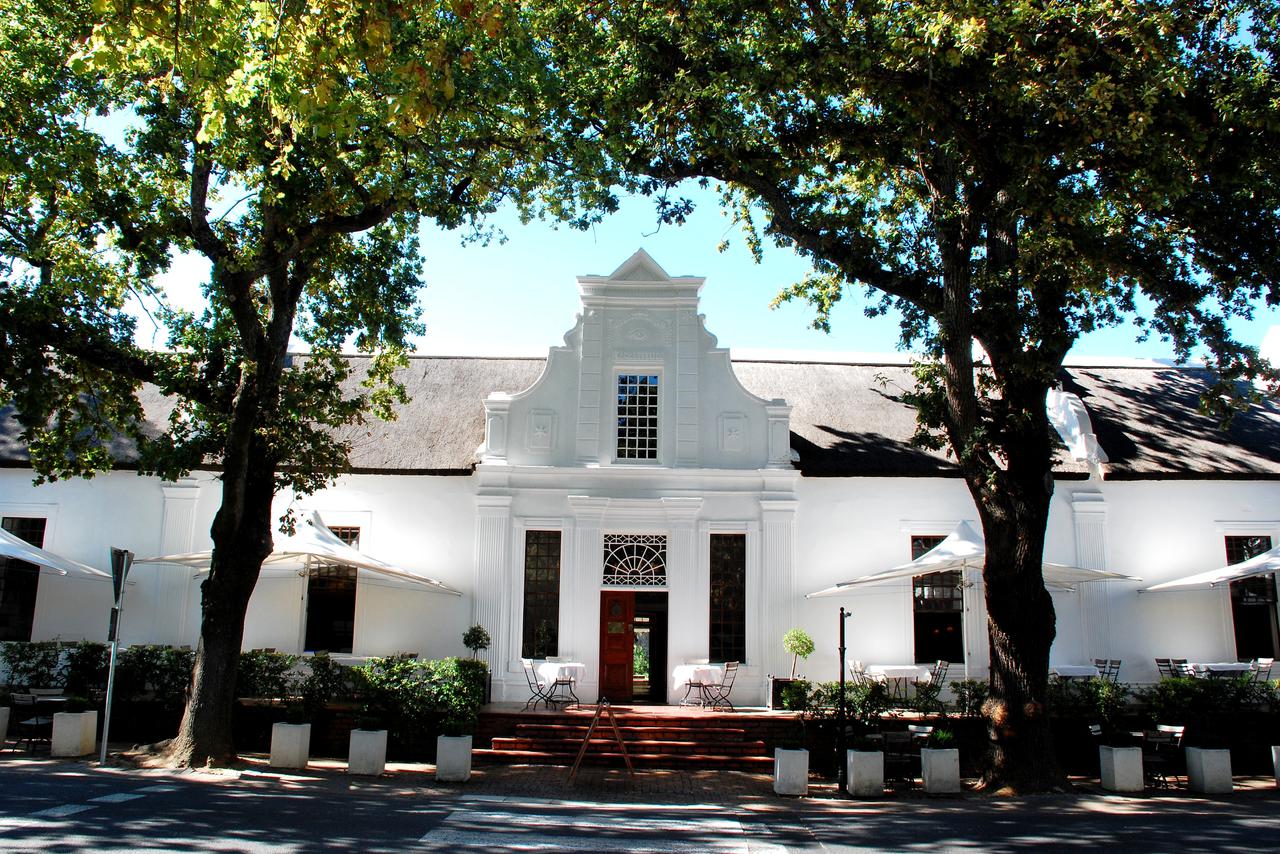
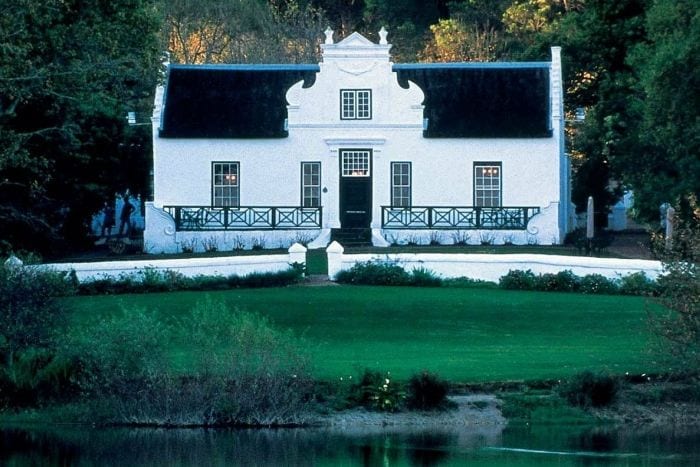
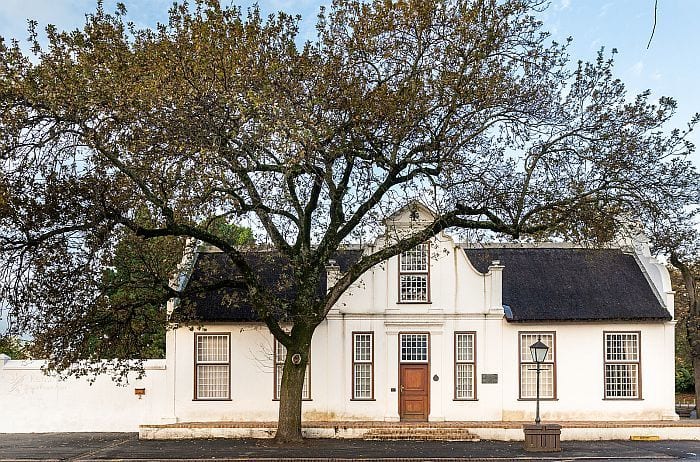
Good examples of Cape Dutch architecture in towns
Stellenbosch, Tulbagh, Swellendam, Paarl and Graaff Reinet have the best examples of Cape Dutch architecture.
Stellenbosch
The Cape Governor Simon van der Stel visited the Eerste river valley (site of Stellenbosch) in 1679 and decided the area was suitable for farming. Established in 1685, the charming town of Stellenbosch still contains a number of well-preserved Cape Dutch streets from that era. A walk around Stellenbosch shows off the many styles of Cape Dutch architecture through the years.
We recommend a visit to the Village Museum which shows four ‘settler’ houses through the ages. This shows how the Dutch colonists first lived when they arrived in the late 17th century. It then charts how the Cape Dutch architecture developed until the 19th century.
Many of the surrounding wine estates have beautiful old Cape Dutch homesteads. Some such as Boschendal and Vergelegen are open to visitors.
Cape Dutch Architecture in Somerset West
Vergelegen Wine Estate
Vergelegen Wine Estate is an elegant, tranquil wine estate in Somerset West. It has a dramatic history. It was the original home of Simon Van der Stel, the first Governor of the Cape. But he lost his home when he fell out of favour with the Dutch authorities. Nowadays it’s a wonderful place to spend a few hours. You can tour the Cape Dutch homestead, meander through the beautiful gardens, enjoy some wine tasting and take a cellar tour in its state-of-the-art modern cellar. Vegelegen is in Somerset West and you may like to combine a visit with the nearby wine and olive estates of Lourensford and Morgenster.
Boschendal Wine Estate
The manor house at Boschendal is not as old as Vergelegen but arguably it’s a more attractive example of Cape Dutch architecture. The current manor house was built in 1812. Here you can see the manor house, mainly from outside, sample their wines, enjoy their traditional Cape restaurant or opt to take a gourmet picnic to eat in their edenesque grounds. Alongside this, it is well worth spending some time in the recently revitalized garden. Boschendal lies between Stellenbosch and Franschhoek.
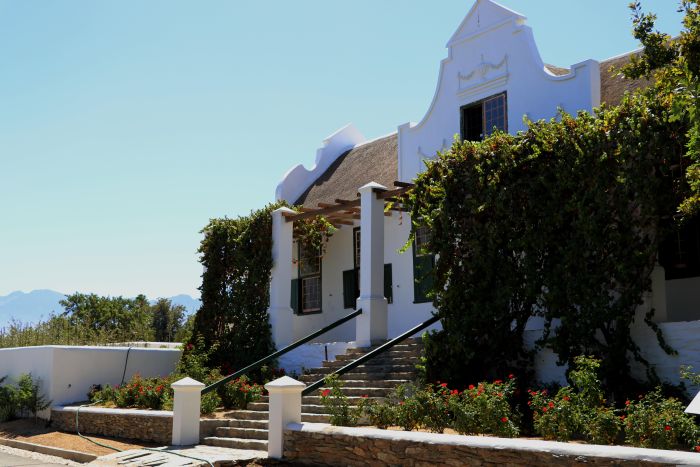
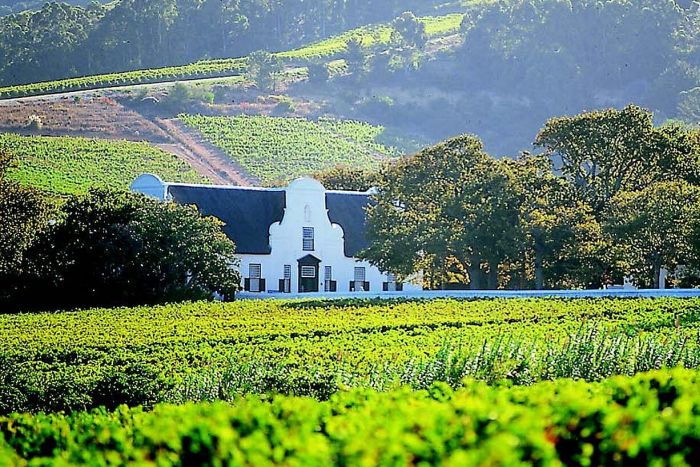
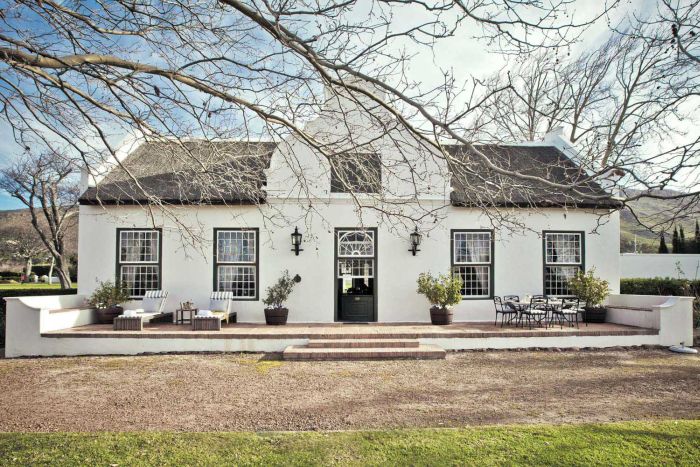
Other Cape Dutch Wine Estates to Visit (Outside views only)
Babylonstoren
Though the Manor House is only for in-house residents, you can still enjoy the magnificent gardens, the cellar tours, the new tasting room, Babel restaurant or the Conservatory and a particularly food farm shop.
LÓmarins Wine Estate and Motor Museum
The main farmhouse is not open to the public, the gracious outbuildings house the introduction to the Franschhoek Motor Musuem and the Wine-tasting room. Well worth a visit…
Other Wine Estates include Blaauwklippen, Spier, Rustenberg… the list goes on…
Chat to us
Tell us what you have in mind and we'll craft an itinerary for you, at no obligation
Contact Us NowCape Dutch Homesteads
Hotels in Cape Dutch Homesteads
You can also stay in some old Cape Dutch homesteads which have been converted into luxurious boutique hotels.
Prime examples are:
- Lanzerac Hotel & Spa, Stellenbosch
- Hawksmoor House, northern Winelands
- Babylonstoren Estate, between Paarl & Franschhoek
- Boschendal Farm, between Stellenbosch and Franschhoek
- Grande Roche Hotel & Spa, Paarl
- Grande Dedale, Wellington
- Rickety Bridge Manor, near Franschhoek
In the Constantia Area of Cape Town
- Alphen Hotel, Constantia
- Steenberg Hotel & Spa, Constantia
- Cellars-Hohenort Hotel, Constantia
Elsewhere
- Drostdy Hotel, Graaff Reinet, Eastern Cape
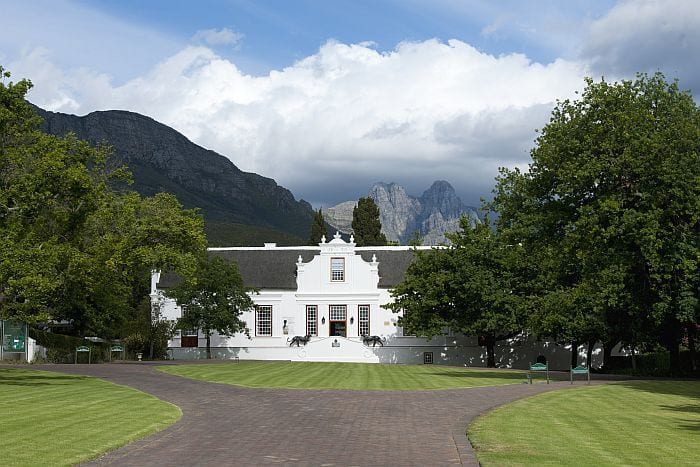
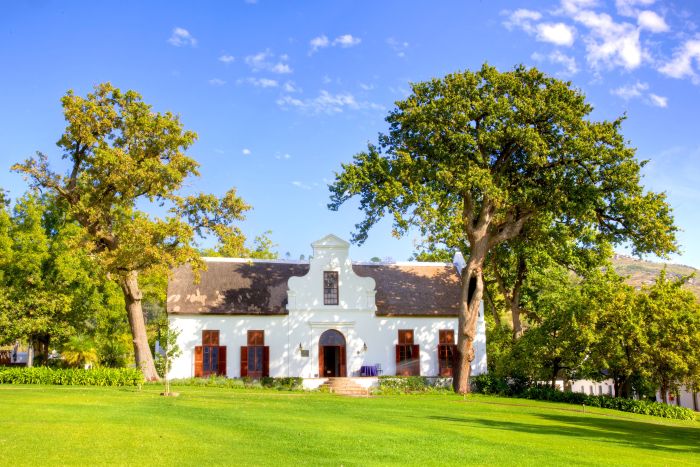
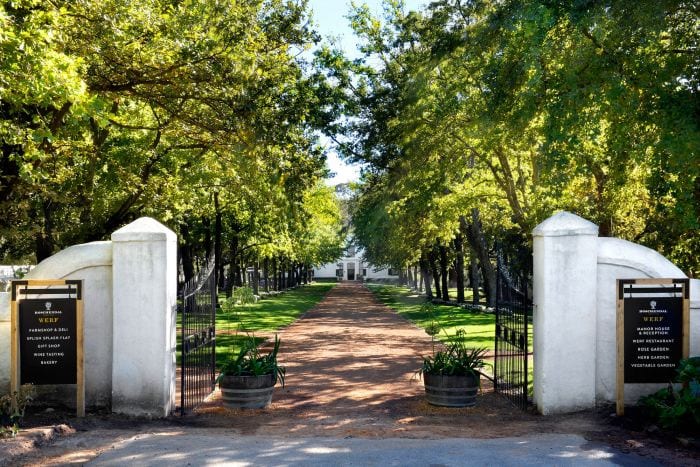
Download our Winelands Restaurant Guide
Feeling hungry? Take a look at our guide to the best Restaurants in the Cape Winelands
Download NowAbout the Authors – Cedarberg Africa
Cedarberg Africa is a Africa safari specialist focusing on Southern Africa. We design tailor-made itineraries which are created around YOUR interests. As we have long-standing relationships with our hotels and game lodges, we have very competitive rates. So typically you will not pay more overall for your trip, than if you booked it yourself, or via an online booking system. So you get all our knowledge and 1st-hand advice for no extra cost.
We have been in business for nearly 25 years so we know what we’re doing!


